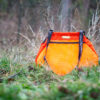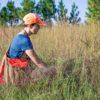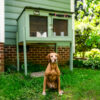Both of my dogs eat a homemade raw meat diet. I follow what is called a prey model raw diet, although since I include vegetables, fruits, and seeds, it is technically a biologically appropriate raw food (BARF) diet. What does that mean?
The prey model diet is supposed to mimic the percentages of different types of tissues in prey animals. The basic percentages I follow are 80% muscle meat, 10% bone, 5% liver, and 5% secreting organ (such as kidney, brain, or spleen). I include pureed vegetables like kale, spinach, and chard, and fruits such as strawberries, blueberries, and raspberries. Other items I add include eggs, yogurt or kefir, sunflower seeds, wheatgrass, kelp powder, golden paste, bone broth, green-lipped mussels, and sardines. I have been feeding a raw diet for four years now and I have seen real benefits in my dogs. I feed raw for many reasons, which I have outlined below.
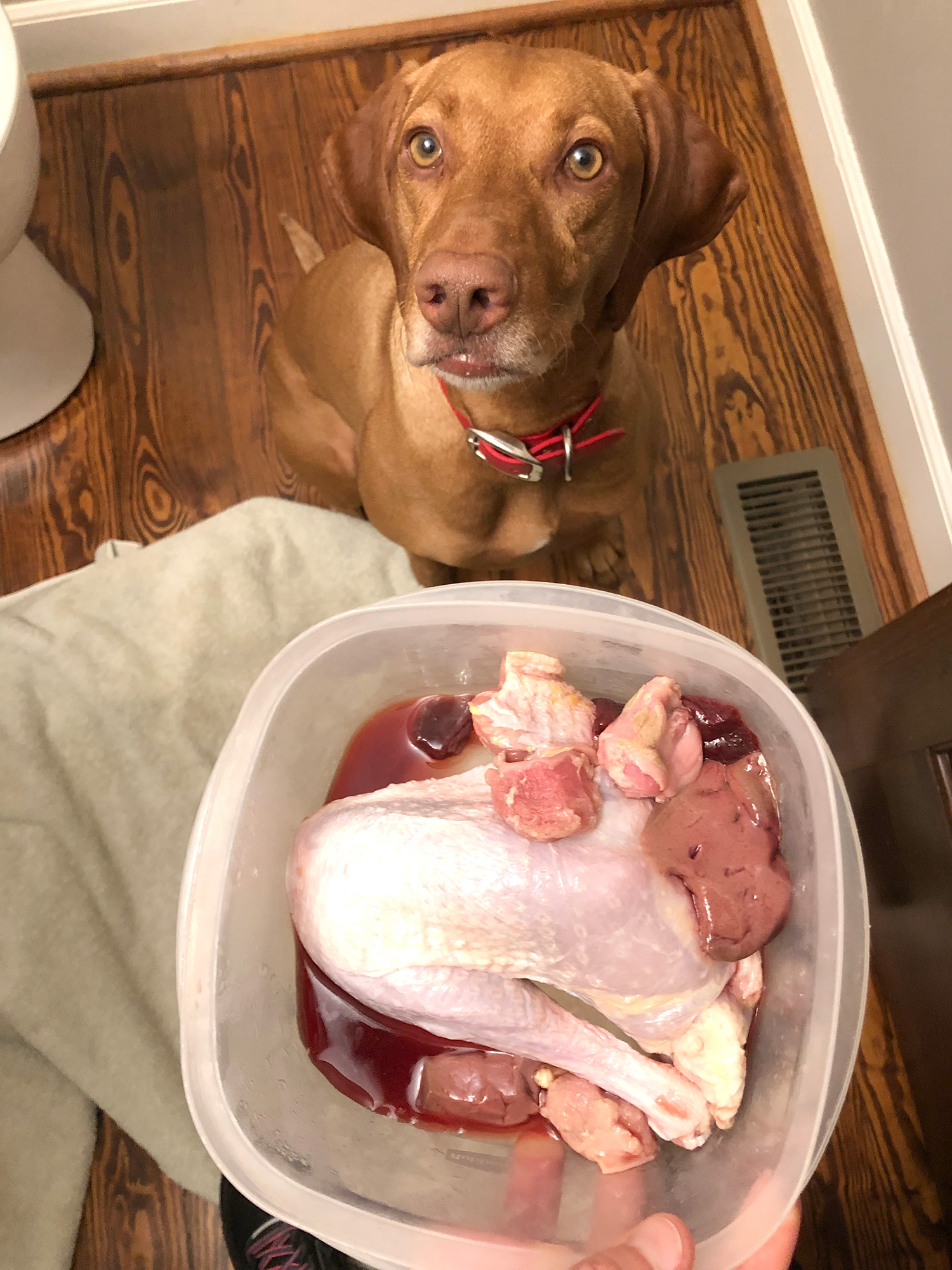
This meal consists of muscle meat and bone (pheasant leg quarter and chicken gizzard), liver (pork liver) and secreting organ (pork spleen).
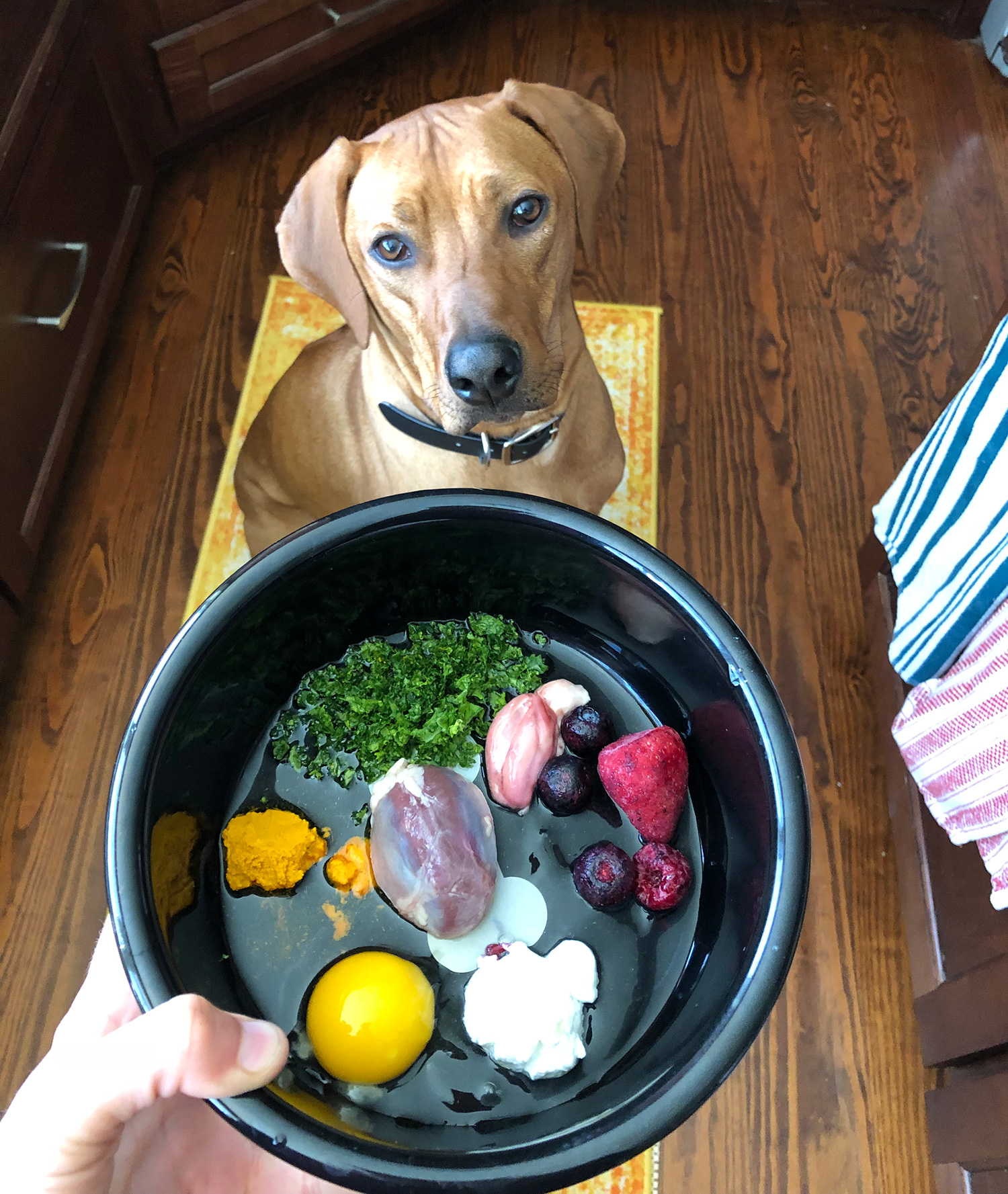
I typically feed the “extras” to my dogs during lunch. This bowl has pureed kale, berries, an egg, golden paste, yogurt, and a duck gizzard.
Overall Health
The main reason I switched to raw in the first place was because Zara did not do well on a kibble diet after she was about 15 months old. We had multiple bouts of vomiting and diarrhea, I had trouble keeping weight on her, she had many yeast infections, and she had several loose poops each day. When she was 2.5 years old, I changed to a commercially-prepared raw diet and saw an immediate difference. After a few more months of research, I started preparing her food myself in August 2016.
I believe a raw diet just makes sense. Before kibble was invented about 100 years ago, dogs ate a fresh food diet. While it was probably not as balanced as what I feed today, dogs ate scraps and leftovers and wild game for thousands of years. Kibble is a processed product and people often expect their dogs to eat the same variety for years and years. I realize that humans are not the same as dogs, but the parallels are there. What would our health be if we ate the same processed thing for years? Probably not great.
Cleaner Teeth
Chewing on raw bones really helps keep my dogs’ teeth clean. Zara is six and a half years old and her teeth are in pretty good shape, especially considering that I hardly spend any time brushing them (need to work on that). Over 80% of dogs over three years old have dental disease. While this can be reduced by daily teeth brushing, the physical act of crunching and chewing bones goes a long way.
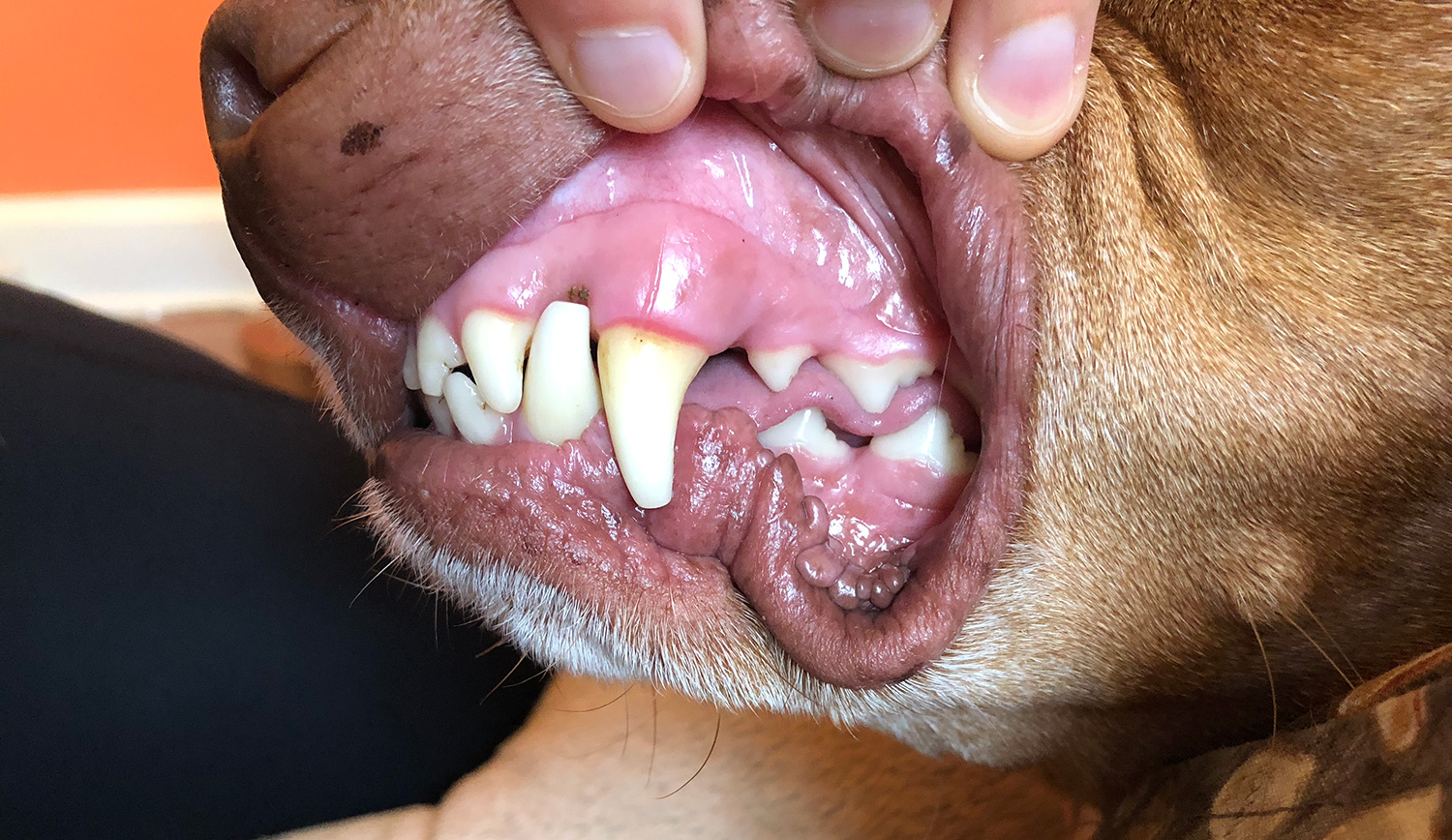
Zara’s teeth. Although she has some wear on her canines and minor staining, they look pretty good for a six and a half year old dog. I’ve recently started brushing her teeth more, but when this photo was taken, I probably brushed them about once every two months.
Less Yeast
Zara had chronic ear infections when she ate kibble. Her paws also had the common “Frito feet” or “corn chip feet” smell, which is due to yeast overgrowth resulting from carbohydrates in the diet. Now her feet don’t smell at all and she’s only had one ear infection in the last four years (she went swimming and I didn’t clean her ears afterward.)
Shiny, Soft Coats
A dog on a raw diet has a softer and shiner coat than one on a kibble diet. Shortly after switching Zara and Colombo from kibble to raw (Colombo was switched at nine months old), I noticed that they went through a period of excessive shedding. After that, their hair grew in much softer.
Smaller Poop
As I mentioned previously, Zara had multiple runny poops per day when she ate kibble. It seemed like her body was not digesting the food very well. After switching to raw, she poops twice a day and unless she has eaten something questionable in the yard or is sick, her poop is solid and easy to pick up. The quantity of poop is also much smaller. I’ve watched other full-grown ridgebacks before and I can barely get my hand around their poop to pick it up. Colombo’s poops are tiny in comparison.
Control Over Ingredients
Since I prepare my dogs’ diet myself, I know exactly what goes into it. I can choose where to source ingredients and it is easy to make a swap if needed. Kibble sometimes has product recalls, which are scary if you have been feeding your dog that food for a while. Also, given the current situation with dilated cardiomyopathy (DCM) and the possible association with dogs who were eating grain-free kibble diets, I honestly am not sure what type of kibble I would feed my dogs if I had to. There are so many out there and vets still can’t agree on what is causing DCM and what type of kibble is best. (Side note: I realize the vet who wrote the article in the link above says not to feed a homemade raw diet, but that is not surprising. The majority of vets do not support raw, but that’s a topic for another day. I feel that a raw diet is best for my dogs and I do yearly comprehensive blood work on them to make sure they are not deficient in anything.)

A fresh raw duck head.
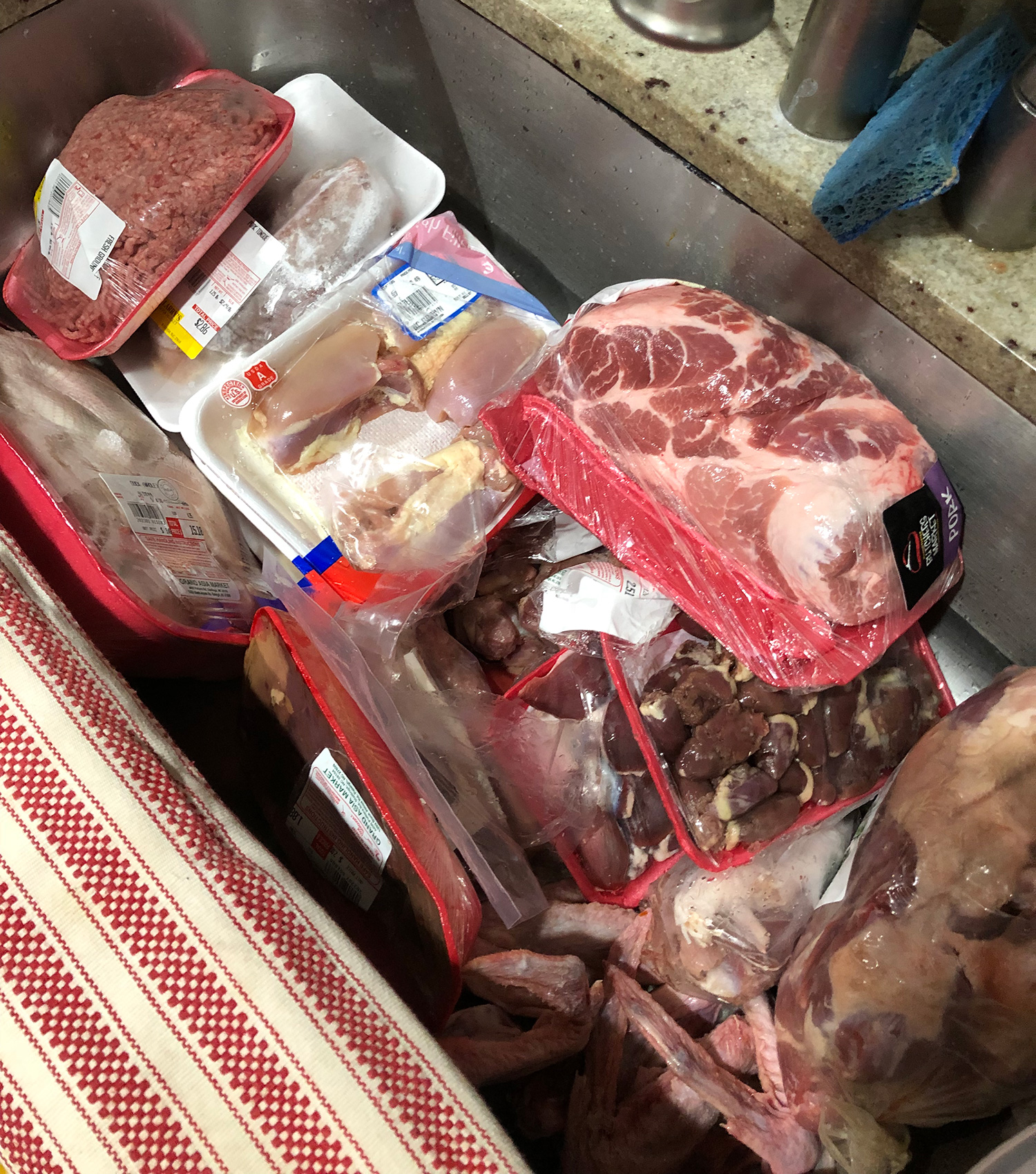
What my kitchen sink looks like before I meal prep for one or two weeks.
Better Performance
Both Zara and Colombo are highly active athletes. As a runner myself, I know that I feel and perform better when I’m eating healthy, fresh food versus heavy, processed, sugar- or carb-laden food. Although it might be a bit of a stretch, I would imagine that their performance is also enhanced by eating a raw diet.
I Enjoy It
Lastly, although feeding a DIY raw diet is certainly more work than pouring kibble in a bowl, it is something I enjoy. I like sourcing meat and I get excited when I find new ingredients or sales. After doing this for four years, I can easily identify what various organs look like, which I think is cool. Before I fed raw, I had no idea what the insides of animals looked like.
Do you feed raw or have you thought about it? If you’re looking to start feeding your dog a raw diet, the Perfectly Rawsome website is a great place to find information.
